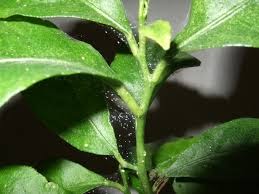Spider Mites
go.ncsu.edu/readext?721886
en Español / em Português
El inglés es el idioma de control de esta página. En la medida en que haya algún conflicto entre la traducción al inglés y la traducción, el inglés prevalece.
Al hacer clic en el enlace de traducción se activa un servicio de traducción gratuito para convertir la página al español. Al igual que con cualquier traducción por Internet, la conversión no es sensible al contexto y puede que no traduzca el texto en su significado original. NC State Extension no garantiza la exactitud del texto traducido. Por favor, tenga en cuenta que algunas aplicaciones y/o servicios pueden no funcionar como se espera cuando se traducen.
Português
Inglês é o idioma de controle desta página. Na medida que haja algum conflito entre o texto original em Inglês e a tradução, o Inglês prevalece.
Ao clicar no link de tradução, um serviço gratuito de tradução será ativado para converter a página para o Português. Como em qualquer tradução pela internet, a conversão não é sensivel ao contexto e pode não ocorrer a tradução para o significado orginal. O serviço de Extensão da Carolina do Norte (NC State Extension) não garante a exatidão do texto traduzido. Por favor, observe que algumas funções ou serviços podem não funcionar como esperado após a tradução.
English
English is the controlling language of this page. To the extent there is any conflict between the English text and the translation, English controls.
Clicking on the translation link activates a free translation service to convert the page to Spanish. As with any Internet translation, the conversion is not context-sensitive and may not translate the text to its original meaning. NC State Extension does not guarantee the accuracy of the translated text. Please note that some applications and/or services may not function as expected when translated.
Collapse ▲
Identification
Several species of warm and cool-season Spider mites call eastern North Carolina home. Spider mites are small, no bigger than a grain of salt. They are eight-legged creatures closely related to spiders. All spider mites have piercing, sucking mouthparts that they use to extract the sugars from the leaves of plants. Following periods of excessive heat and drought, warm-season spider mites such as the two-spotted spider mite thrive. In the spring and fall, during periods of cool weather, cool-season spider mites such as the Spruce spider mite thrive.
Spider Mites can be a big problem for ornamental landscape plants, vegetable gardens, fruit trees, and even weeds. They often go unnoticed until extensive damage has been done. Plants that are stressed, plants that have southern exposure, and plants subjected to radiant heat from an impervious surface are the most susceptible.
Damage and Detection
Learning how to detect these voracious critters early will help your prized plants avoid serious injury or death. Scout your landscape plants regularly paying close attention to foundation plantings and plants with limited airflow. Look for “bronzing”, stippling, or foliage that is discolored. Small webs that may contain dead plant debri or grains of sand may also indicate the presence of spider mites. In severe infestations, infected plants may partially defoliate, stop blooming or fruiting, or even die. If you suspect spider mite damage, simply hold a white piece of paper, cardboard, or other white surface under the suspected area of infestation and shake the branch and/or leaves. If you notice brown or black dots resembling pepper, that appear to be moving, you likely have spider mites.

Managing Spider Mites
Managing spider mites requires an integrated approach using a combination of cultural, mechanical, biological, and possible chemical control. Early detection and proper decision making are critical.
Detection
Inspect your bedding plants and deciduous trees bi-weekly in the summer during periods of drought and high heat.
Decision Making
When an average of 2 dozen mites fall from a branch each time you strike or shake it over an 8 x 11-inch sheet of white paper you should consider applying a pesticide. Keep in mind that spider mites must migrate to stems of deciduous woody plants before leaves drop in the fall. This can reduce the need for fall treatment.
Cultural Control
Plants that are under stress are more susceptible to high populations of spider mites. Make sure to water your plants sufficiently during periods of drought. Proper fertilization and adequate light are also extremely important.
Mechanical Control
During heavy rains mites can be dislodged from your plants. Spray your plants with a steady stream of water twice a week during periods of peak mite activity. This form of control has minimal effects on the natural enemies of spider mites.
Biological Controls
The best way to control spider mites is to have a healthy population of natural enemies that feed on them. Use pesticides as a last resort because they will reduce the number of natural enemies to the spider mites. If you choose to use a pesticide for mites or other pests you should try to use a “biorational” pesticide or pesticides that have minimal toxicity to the environment.
When the relative humidity is >50% or the weather is wet many kinds of spider mites are attacked by a fungus. In some cases, this fungus will keep mites from becoming a problem.
Chemical Control
Insecticide soap and horticultural oil can reduce mite populations. Spider mites are found in greater numbers on the underside of a plants foliage. Make sure to thoroughly spray the undersides of leaves. After applying insecticides, wait 7 to 10 days and apply again to kill the spider mites that did not hatch prior to the first application.
The majority of insecticides do not control mites because they are not insects. Numerous miticides are available that control spider mites. In most cases miticides are less harmful to beneficial insects than broad-spectrum herbicides are. Check the North Carolina Agricultural Chemicals Manual for an up to date list of products labeled for spider mite management in ornamental landscapes.
If you have any questions about this topic or if you any other horticulture-related questions please contact Chris Blaha by email at ctblaha@ncsu.edu or by phone at 252-232-2262.
Sources




